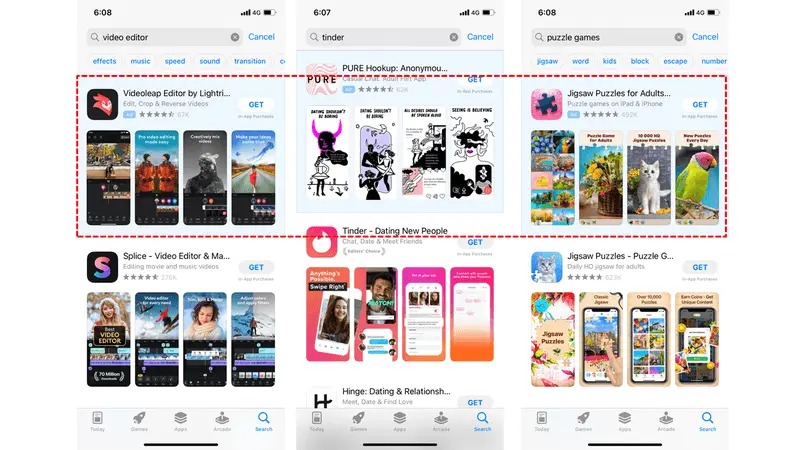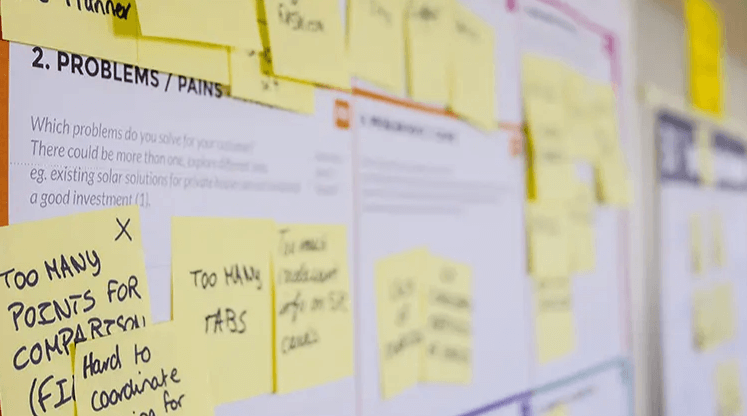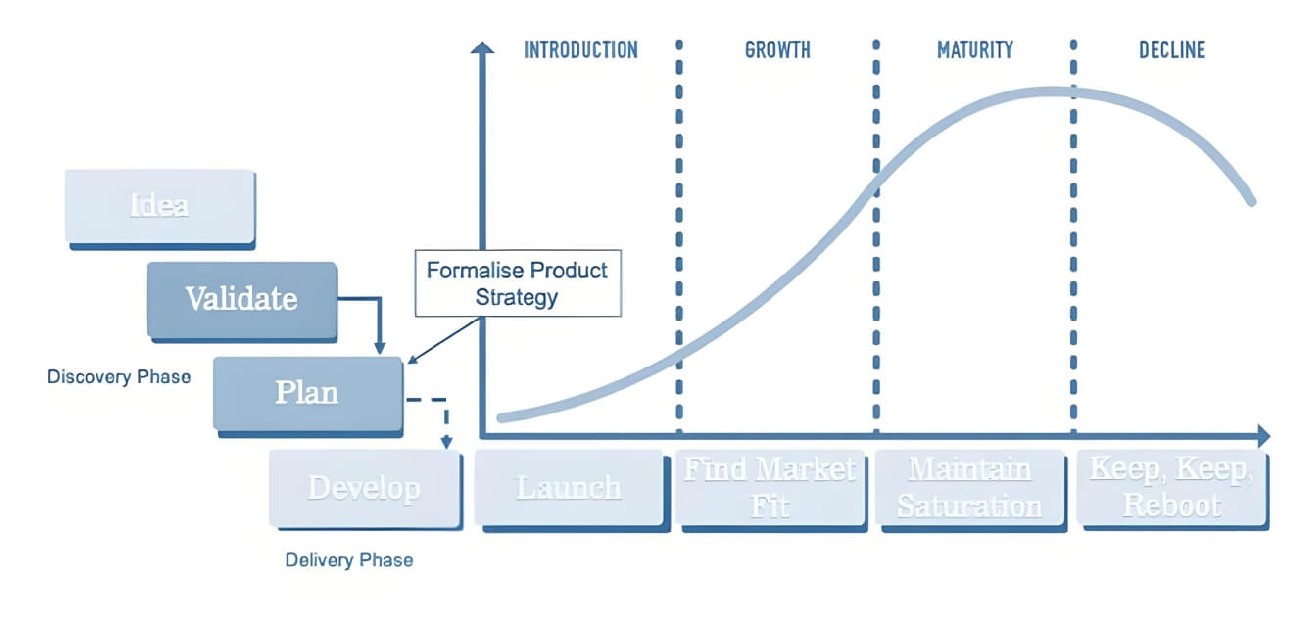For a product manager to evolve from a novice to a mature and wise professional, they must endure numerous challenges and setbacks. Making mistakes is inevitable. The author of this article summarizes the ten top mistakes often made by product managers, so let’s see if any of these pitfalls resonate with you.
A product manager needs to create products; after all, God was also a product manager who created humanity as a product.

Creating a successful product is very difficult. Beyond issues like resources and timing, the most significant factor often lies with the product manager themselves. A good product manager can coordinate resources and seize opportunities, yet they frequently make mistakes.
Recently, while reviewing past notes, I found a similar viewpoint expressed by a seasoned product expert, Marty Cagan. Marty Cagan has served as Vice President at Netscape and as a Senior Vice President for eBay products, boasting extensive experience in product design and management. I, along with my colleague, have also participated in Marty Cagan's product training. Thus, we compiled this article based on Cagan's insights and our understanding of product design to share with everyone.
1. Confusing User Needs with Product Requirements
Most product managers follow a workflow where they gather user needs, write a product requirements document, hand it over to developers, track project progress, coordinate resources, verify outcomes, and finally release the product.
While this workflow is generally correct, errors often arise in how product requirements are determined. This is similarly true for product managers within Taobao, who frequently translate the needs of operations directly into documents for developers. The end result is often an overload of features, leading to a complicated product that resembles a mixed bag.
It’s essential to think from a product design perspective, transforming user needs into product requirements. When trains had not yet been invented, if you asked users what they wanted most, they would likely say, “I want a faster horse.” While it appears that users want a good horse, the actual product requirement translates to needing faster transportation.
User needs pose a question, whereas product requirements are feasible solutions to that question. Therefore, when user needs are expressed as solutions, it’s crucial to explore the underlying hidden issues. A good approach to addressing this problem is to enhance feasibility analysis and requirement reviews.
2. Confusing Boss's Needs with Product Requirements
This is a common pain point for many product managers. Most Taobao PDs have likely encountered bosses presenting demands, even when those requests seem clearly unreasonable. They often find it hard to refute them and end up assigning development tasks.
Bosses have their own perspectives, unique information, experiences, and authority. It's crucial to listen to bosses since they are also users, but their demands should not be automatically treated as product requirements.
For a boss’s needs, it's essential to reinforce demand tracing. Understanding where the boss’s requirements stem from, the context, the user scenarios, and whether there are concrete examples is critical.
Most of the time, a boss’s demands are reasonable but may not hold high priority. We can adopt a delay tactic to respond:
“Boss, your request is quite reasonable and very much to the point. I plan to prioritize this in the next version, as the current version already has many features, and we have very few developers. Could you help me secure a couple more developers?”
By the next version, the boss often forgets their request. If they do remember, implement part of the functionality to maintain goodwill.
3. Confusing Invention with Innovation
This is a common issue for product managers involved in innovation. Especially those with less experience and a strong sense of mission might take an idea or mission and execute it as innovation.
Invention occurs in laboratories, while innovation applies in the industry. Laboratory products are novel but are limited by premises, and they often lack clarity in terms of commercial validation, market promotion, and scalability.
Innovation represents an industry-level change that can be commercialized, sustain a team, scale, and truly reach users, who accept it.
The most unacceptable scenario is when a new product, after a lengthy design and development process involving many engineers, emerges six months later full of flaws and cannot be marketed. Meanwhile, the market has changed, requiring further adjustments to the product requirements while simultaneously refining the previous product. Such a product is destined to fail.
Focus on the minimal core problem, address the most critical issues, complete small but beautiful functionalities, and iterate quickly, prioritizing users. The goal should be to sustain the team, allowing team members to lead good lives. Otherwise, even if the company constantly launches projects, team morale will deteriorate.
4. Replacing User Needs with Personal Needs
Most product managers are good communicators and tend to be assertive. When eager for quick results, or when they cannot identify target users, they may fantasize about product requirements. They fail to validate core issues and solutions with target users, describing product stories (user scenarios and user problems) based on assumptions.
Currently, many emphasize the importance of data, which can lead product managers to overlook customers. By constantly reviewing data, they might replace their perspective with that of the customer. When I was in charge of search products, I often reminded search product managers to treat users as people, not as mere data points. While data is essential, it can obscure humanized user needs.
Product managers should learn to listen to diverse viewpoints and engage with those willing to critique their ideas. Regardless of whether the product serves a small or large user base, it’s vital to spend time understanding the actual needs and feelings of real users. Even casual conversations can lead to previously unconsidered conclusions.
5. Confusing “Creating the Right Product” with “Correctly Creating the Product”
This parallels the distinction between “doing things right and doing the right things.” Many people are accustomed to being directed and then simply follow processes without questioning the purpose or necessity of their tasks.
Product managers are often the same; upon entering a position and receiving a task to complete a feature, they proceed through the process, ending up with a product that is perfectly executed but hardly used. This is particularly prevalent in large, meticulous companies. In segmented and streamlined operational environments, product managers can become mere executors of rules.
For example, if a product manager is tasked with designing a website to promote the company’s technology brand, the most common approach is to design various modules, content, and even create a forum, then hand it over to development. While this produces a well-made website, it may yield no traffic and fail to promote the company’s technology brand effectively. What should the correct approach be? Readers can ponder this for themselves.
We should encourage product managers to pursue their dreams and consider verticalizing the team. This can enhance efficiency while also preventing many errors.
6. Confusing “Adding Features” with “Improving the Product”
Every product needs to continually add new features to meet more user needs and adapt to environmental changes. Product managers frequently equate feature addition with product improvement. This phenomenon is particularly evident in teams managing mature products, where existing thinking and evaluation criteria often lead to homogenization and the continuous addition of “nice to have” features.
However, adding features does not necessarily equate to improving the product. It’s essential to establish reasonable metrics to determine what constitutes “product improvement.”
An unreasonable product metric can negatively impact the product. There are many instances of this at Taobao, where new features are continually released, measuring their success based on transaction conversion rates and overall sales. Similar functionalities exist on Weibo, where features like changing background images, sending gifts, and recommending activities are measured by user participation.
If Taobao search uses search conversion rates as a measure, the result can lead to an overemphasis on low prices and popular items. If Weibo prioritizes user engagement as a metric, it may result in an overload of recommendation features that irritate users. Last year, Dangdang encouraged users to post book reviews, but measuring success by the number of participants led to an influx of poor reviews drowning out valuable feedback.
To address this, it’s crucial to genuinely consider user perspectives and establish reasonable metrics. Some metrics are interdependent; for instance, Taobao search employs a Gini coefficient to ensure traffic distribution doesn’t become overly concentrated. The formulation of reasonable metrics varies significantly across different businesses and requires comprehensive consideration.
7. Unable to Distinguish “Exciting” Features from “Nice to Have” Features
This error bears similarity to the previous one.
The development of wireless internet has made users increasingly discerning; lacking “exciting” features can easily lead users to forget about a product. Yet, product managers often expend excessive energy on developing “nice to have” features.
In a product with hundreds of thousands of users, any single feature can meet the needs of a portion of the user base, and some users will use it. The continuous pursuit of similar functionalities is unending, and if this persists, the product will become increasingly complex. WeChat serves as a good example in this regard. Its primary function is communication; while it can perform many tasks, including media sharing and friend circles, its core focus remains on making communication extremely convenient, such as its push-to-talk feature, which is exciting. WeChat has also introduced some “nice to have” features, like voice reminders, which seem appealing but are not widely used.
Resources are always limited; product managers should concentrate their efforts on the main trajectory, continually asking themselves whether they are typical users of the product, whether users truly like or urgently need this feature. Creating an exciting feature is far more crucial than offering ten “nice to have” features.
8. Pursuing Impressive Requirement Documents Instead of Inspiring Products
Writing a good PRD (Product Requirement Document) is indeed important, as it helps product managers clarify their thoughts while informing technical staff about the product's design details. However, I used to work in technology and did not pay much attention to PRDs; I would only scrutinize them when something was unclear, similar to how we typically treat appliance manuals. Moreover, no matter how profound a PRD is, the target users cannot truly perceive the product's design.
Thus, when drafting a PRD, it should be sufficient for the task at hand. The best approach is to effectively communicate with technical and design teams, and before formally launching product implementation, use fully dynamic high-fidelity prototypes to gain user acceptance and understand their needs. Purely algorithm-driven or data mining products may face challenges in this regard; genuine data analysis can express the design of such products.
9. Treating Product Launch as Success
This mistake is not only easy for product managers to make but also for many company owners. In some large companies, launching a small product or even a minor feature is often celebrated with lengthy congratulatory emails. While such emails can boost morale, they should not equate product launch with product success.
It seems like a simple principle, yet it is challenging to implement. Many product managers are eager to launch their products, leading to a poor user experience. Even if there are quick improvements afterward, it is difficult to regain lost users and reputation. Many products have begun to adopt an invitation testing model. For example, WeChat's version 5.0 beta, the menu function for WeChat public accounts; Weibo's media account tests; Weitao's invitation testing; and many features launched in Taobao search, which initially use only 5% of traffic for testing. These practices are aimed at avoiding hasty product or feature releases.
Product launch means that users are genuinely starting to use it; success is not measured by whether a product is launched but by whether users genuinely like it. For users to truly enjoy the product, the product launch is just the beginning.
10. Entering the "Feeding the Beast" Mode
What does "feeding the beast" mean? The beast is never satisfied and needs constant feeding. A product manager may sometimes not have a clear idea of which features to develop, yet needs to provide their technical team with sufficient workload. As a result, they are forced to find a bunch of minor features for development.
Many companies face similar situations; it's common to hear technical or design staff say, "You have too little work here, and there’s nothing new or challenging for me. I lack a sense of accomplishment, and my promotion will be affected. I want to work on a big project..." In such cases, if the product manager needs to secure these resources, they must provide enough substantial requirements for the relevant teams to develop, continuously feeding the development and design teams with demands. What the demands are becomes less important; what matters is that the resources supporting the product are not snatched away by other products.
The downsides of this approach are evident: it wastes company resources and, more importantly, it can lead to illogical products with bloated features. Ultimately, the product may either become mediocre or require significant downsizing. Adding features is easier than removing them. Any subtraction can disrupt a portion of users' habits.
This error can sometimes arise unconsciously, even happening before we realize it. To avoid this mistake, it is essential to provide reasonable time for product development from an organizational perspective, granting product managers enough trust, and ensuring they engage in sufficient self-reflection. Additionally, consider verticalizing the team structure, allowing technical and product staff to work closely together—either excelling together or struggling together.
The above ten top mistakes are summarized by Marty Cagan based on his over a decade of experience in product management and are worth referencing for the development of internet products, especially in medium to large internet companies with multiple product lines and increasingly specialized technical divisions, where similar errors become more common.







